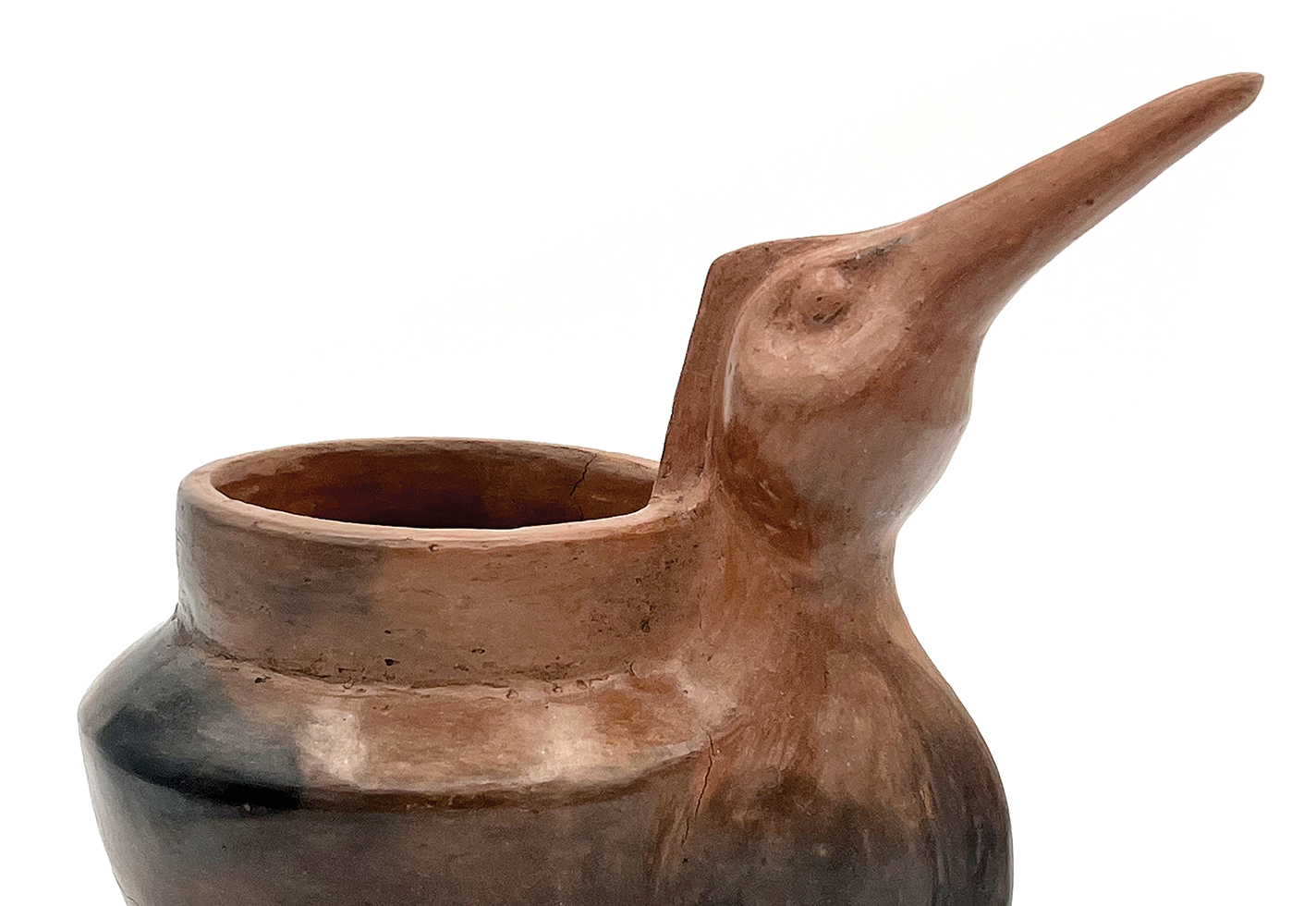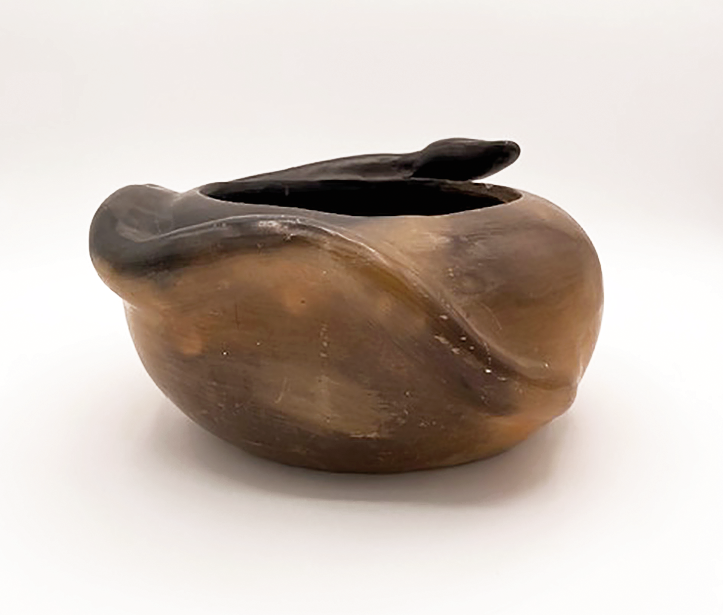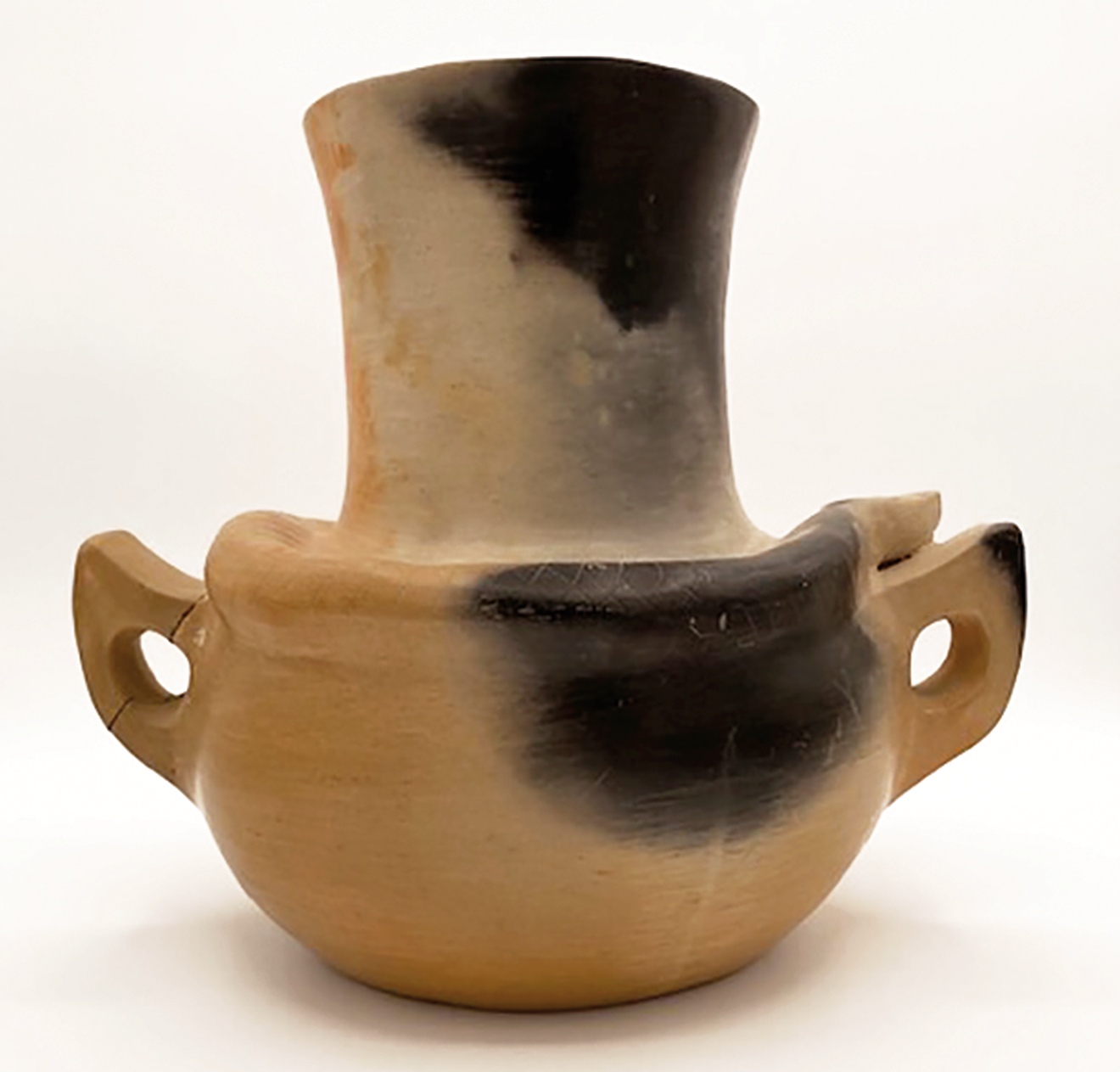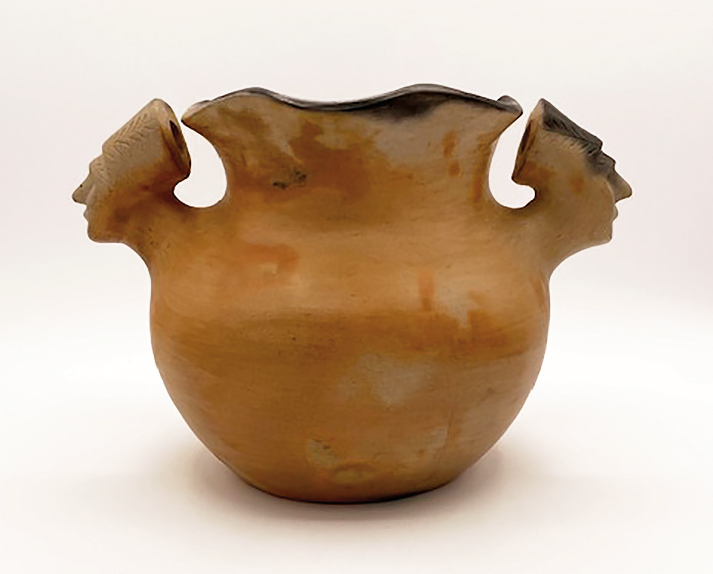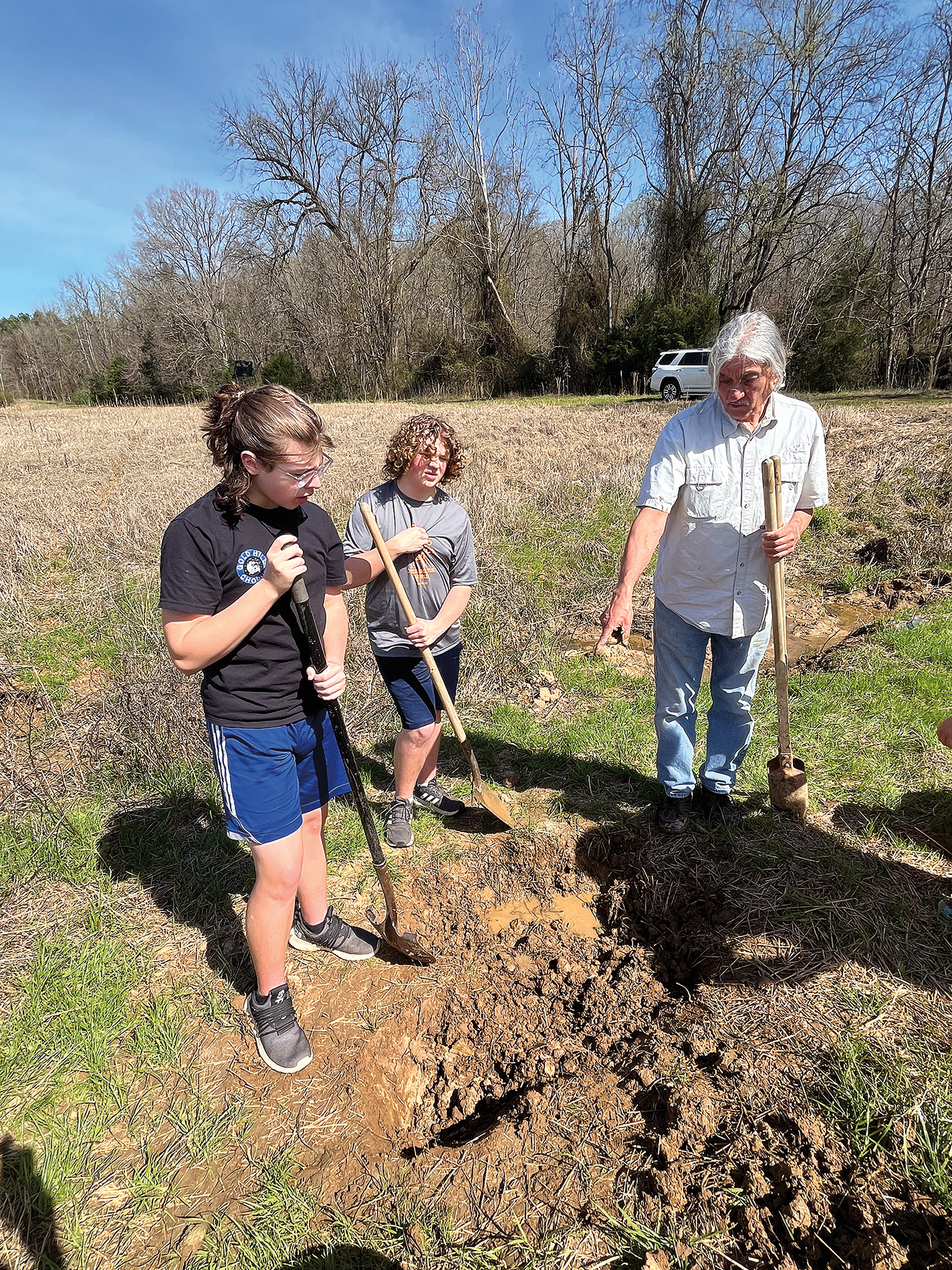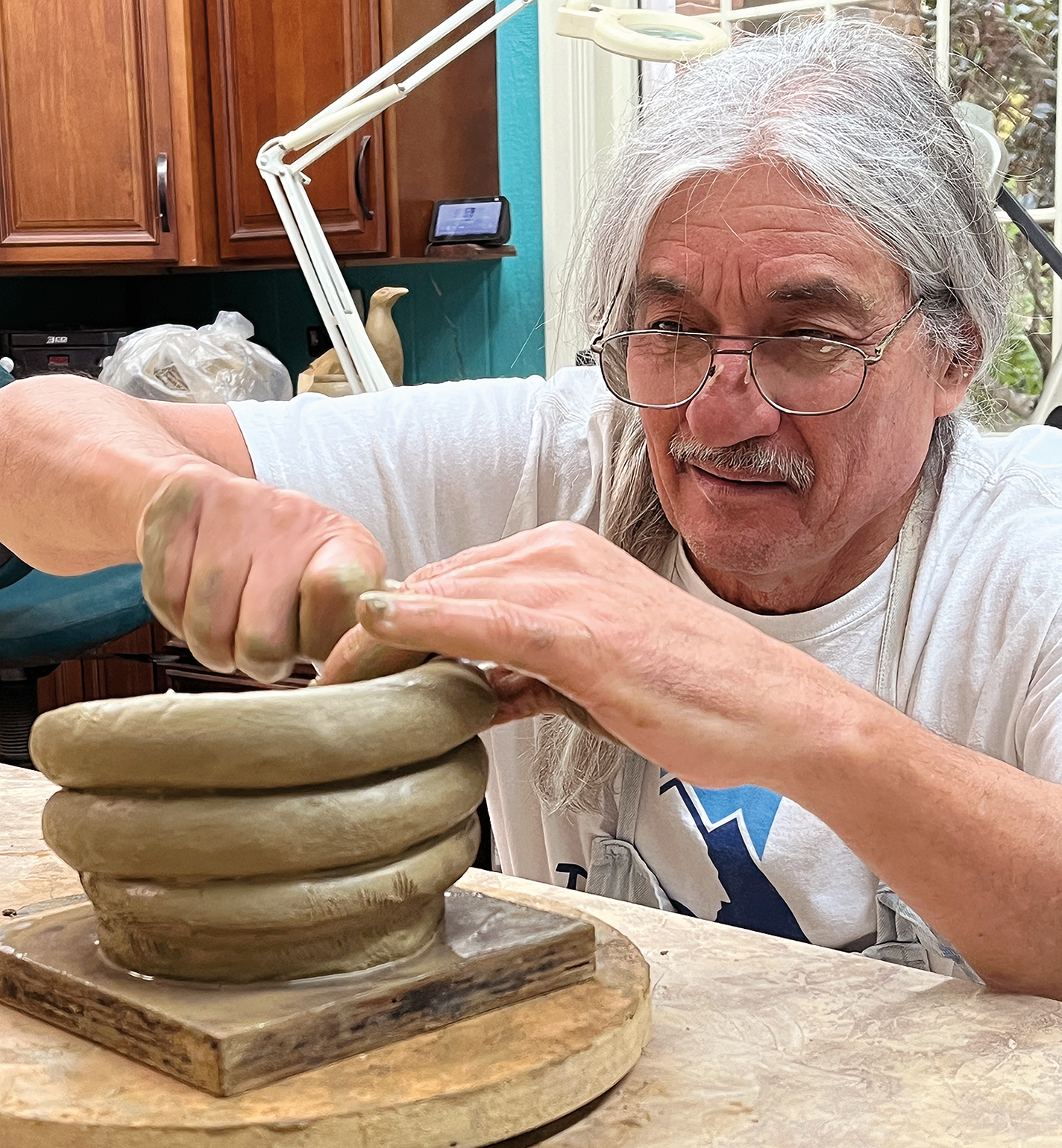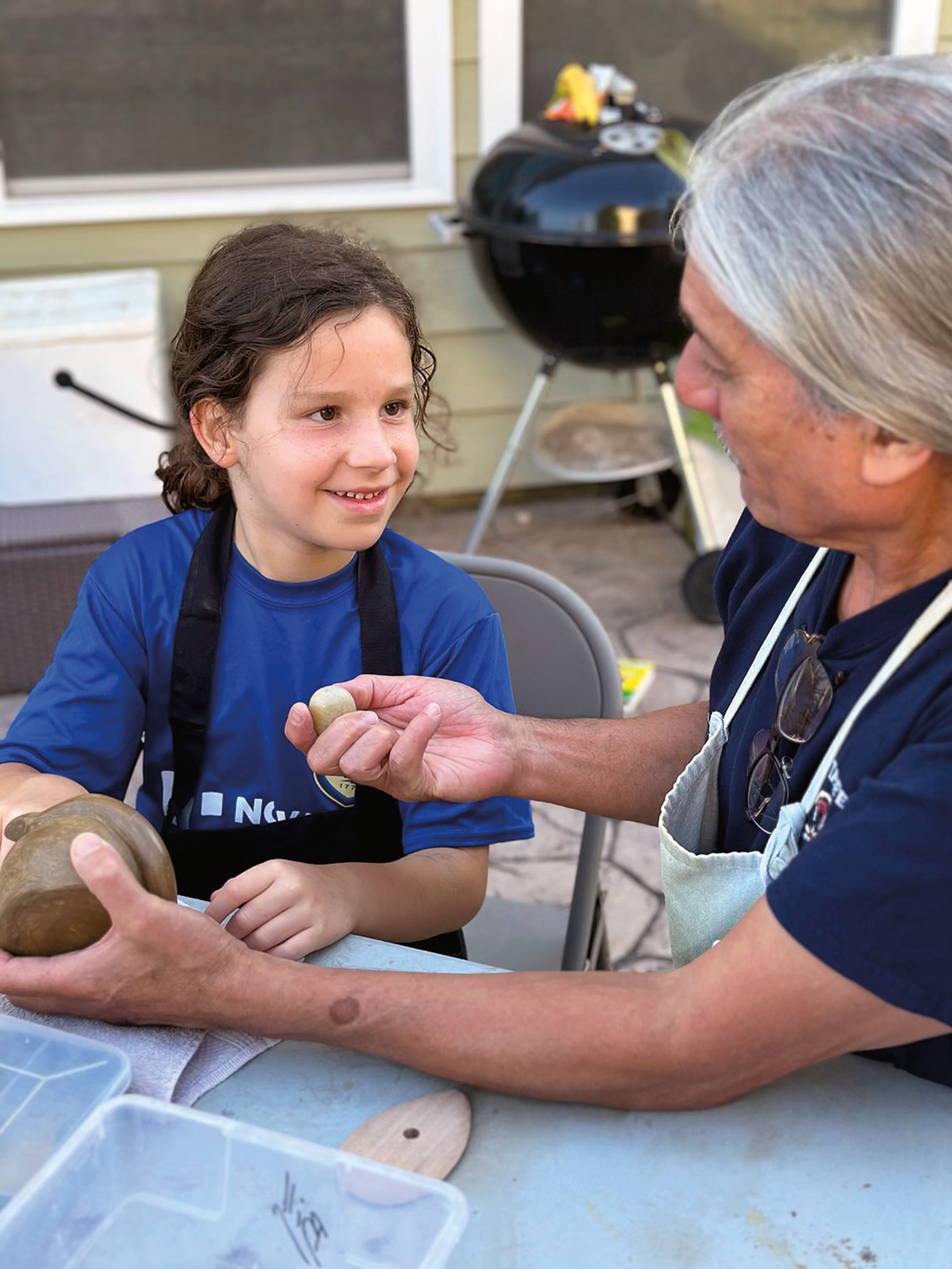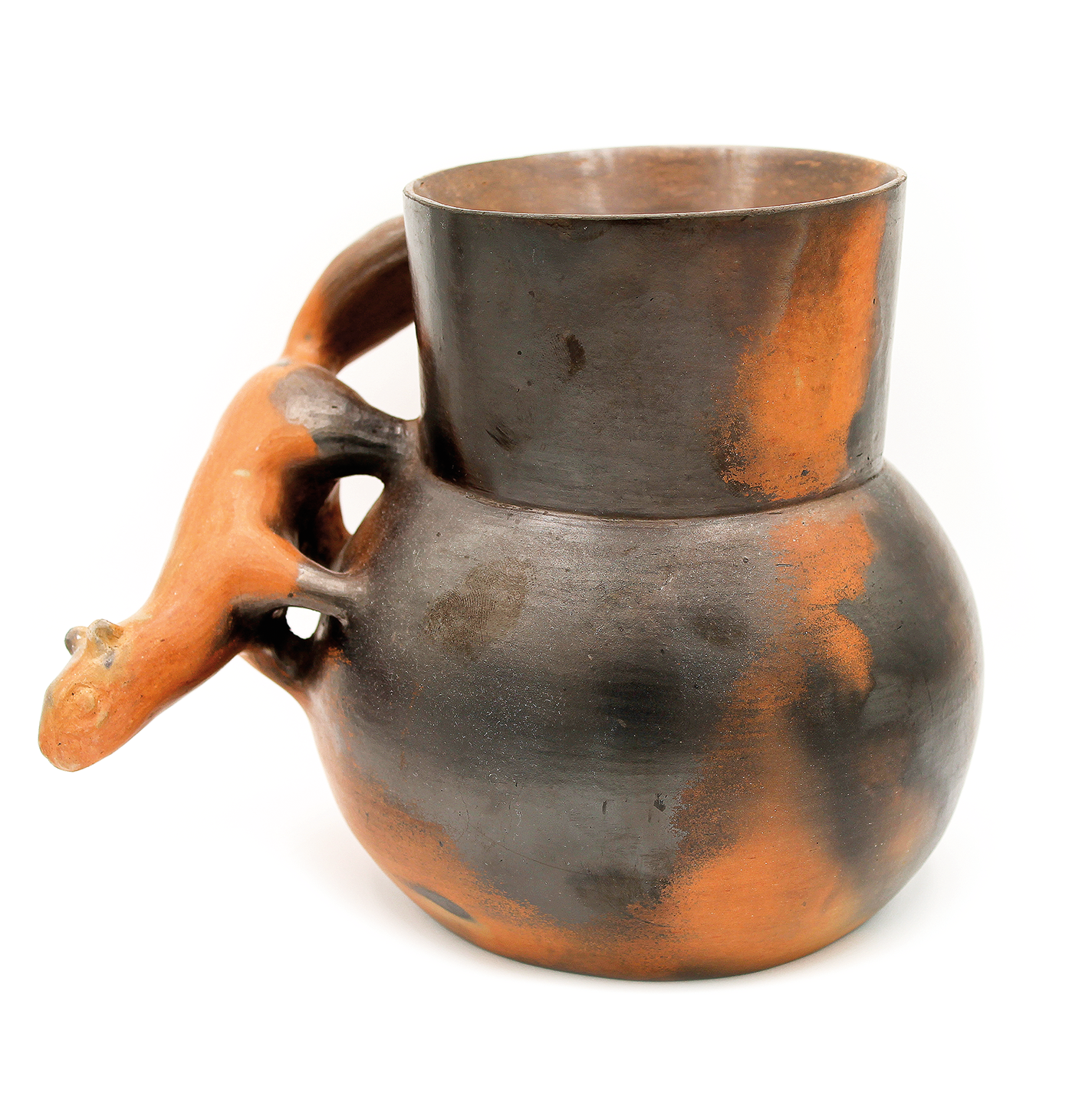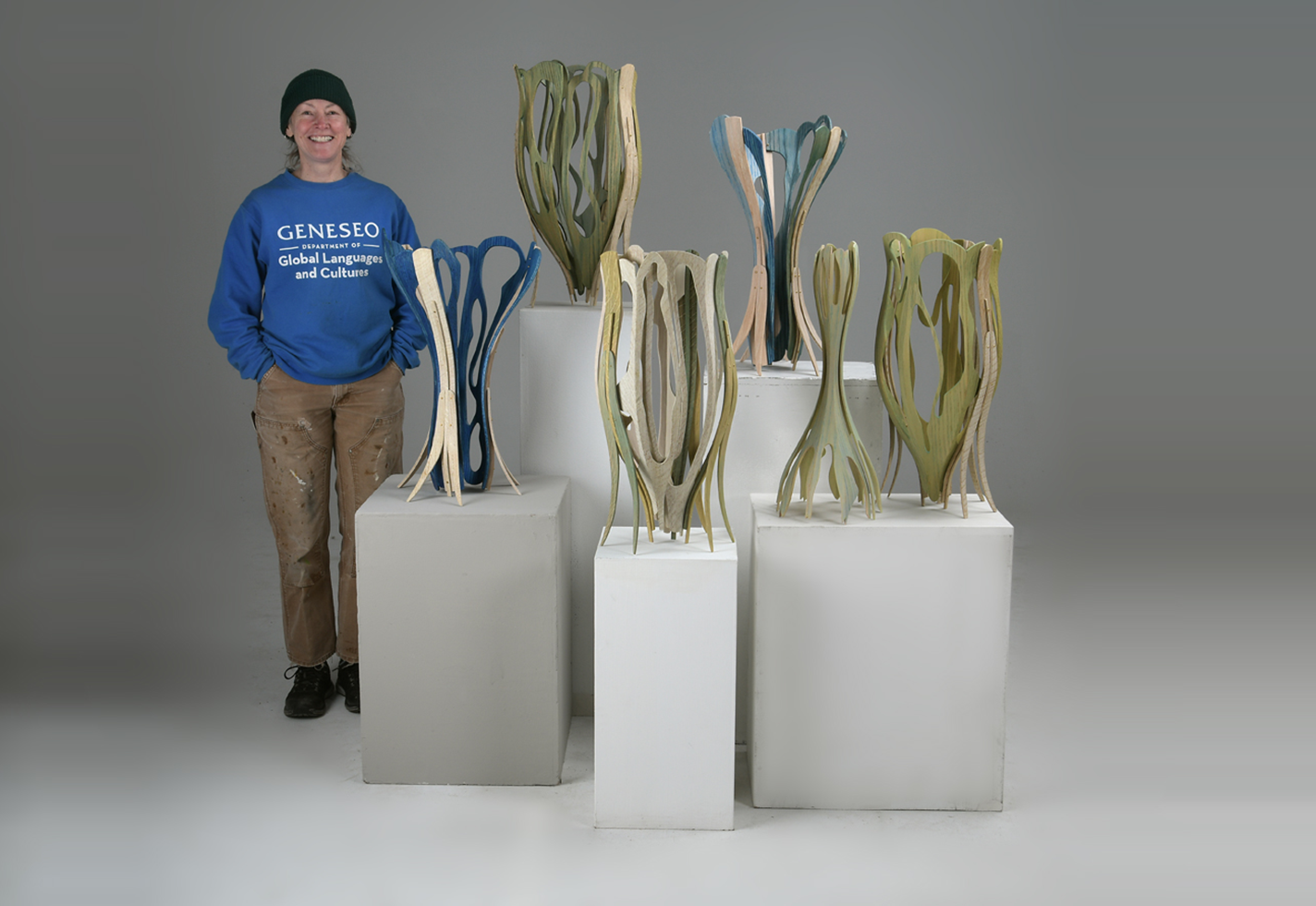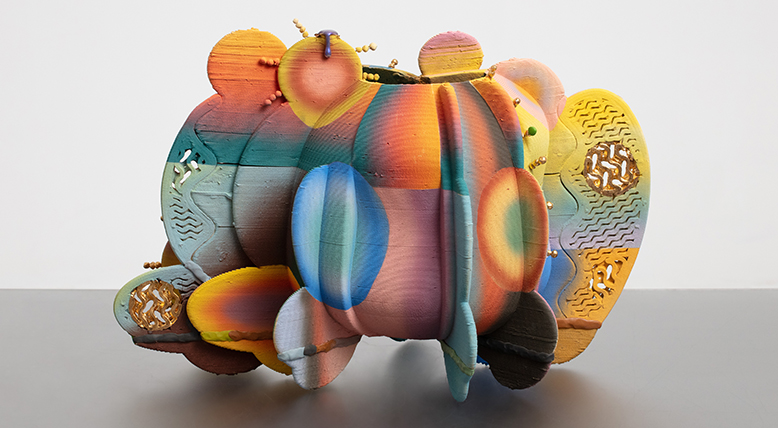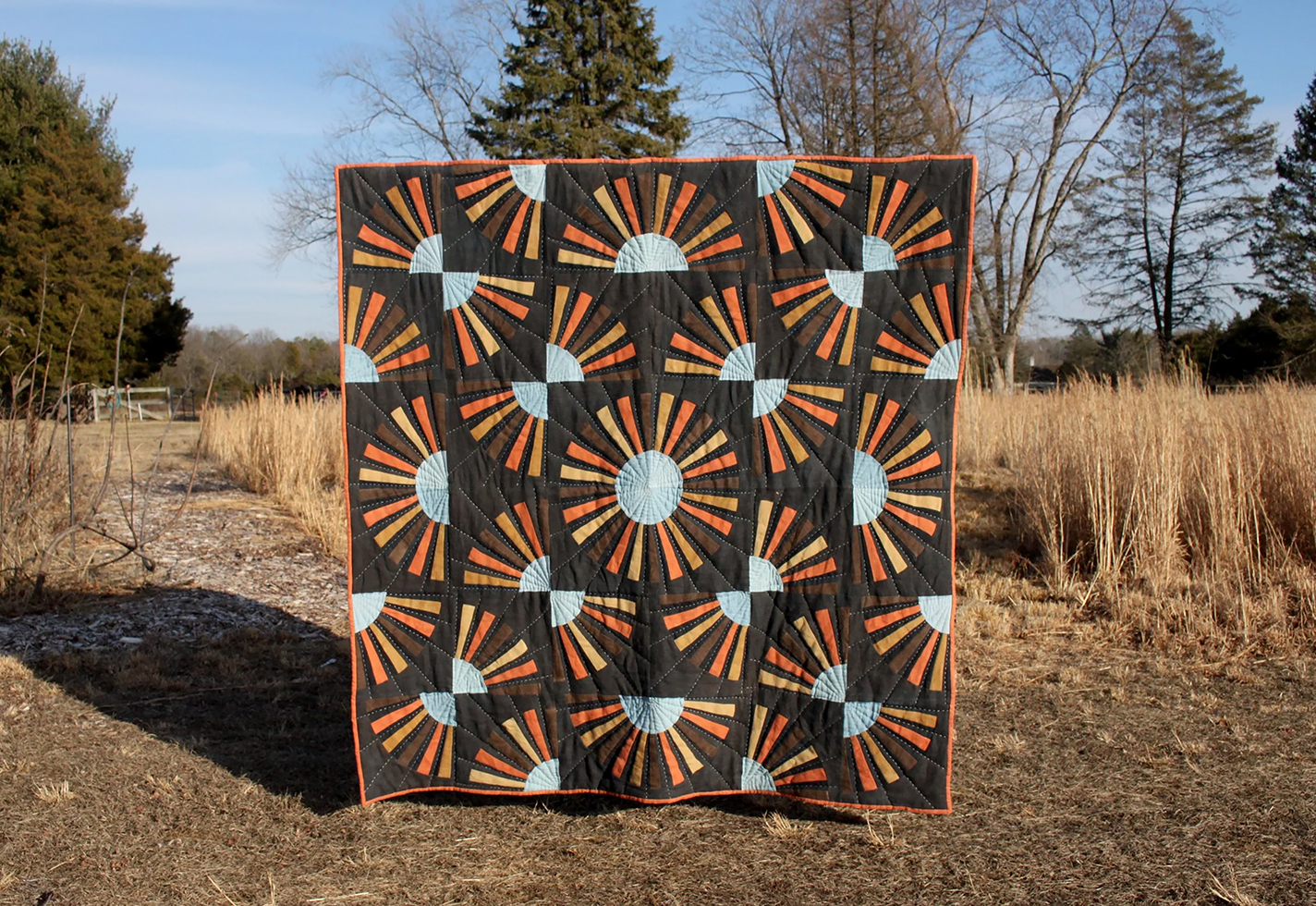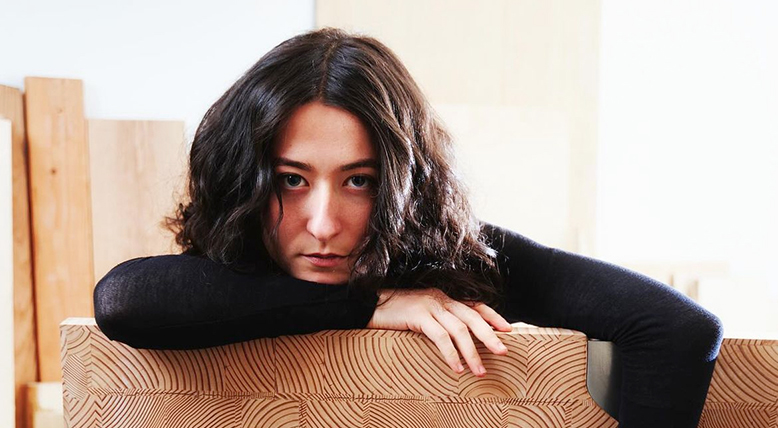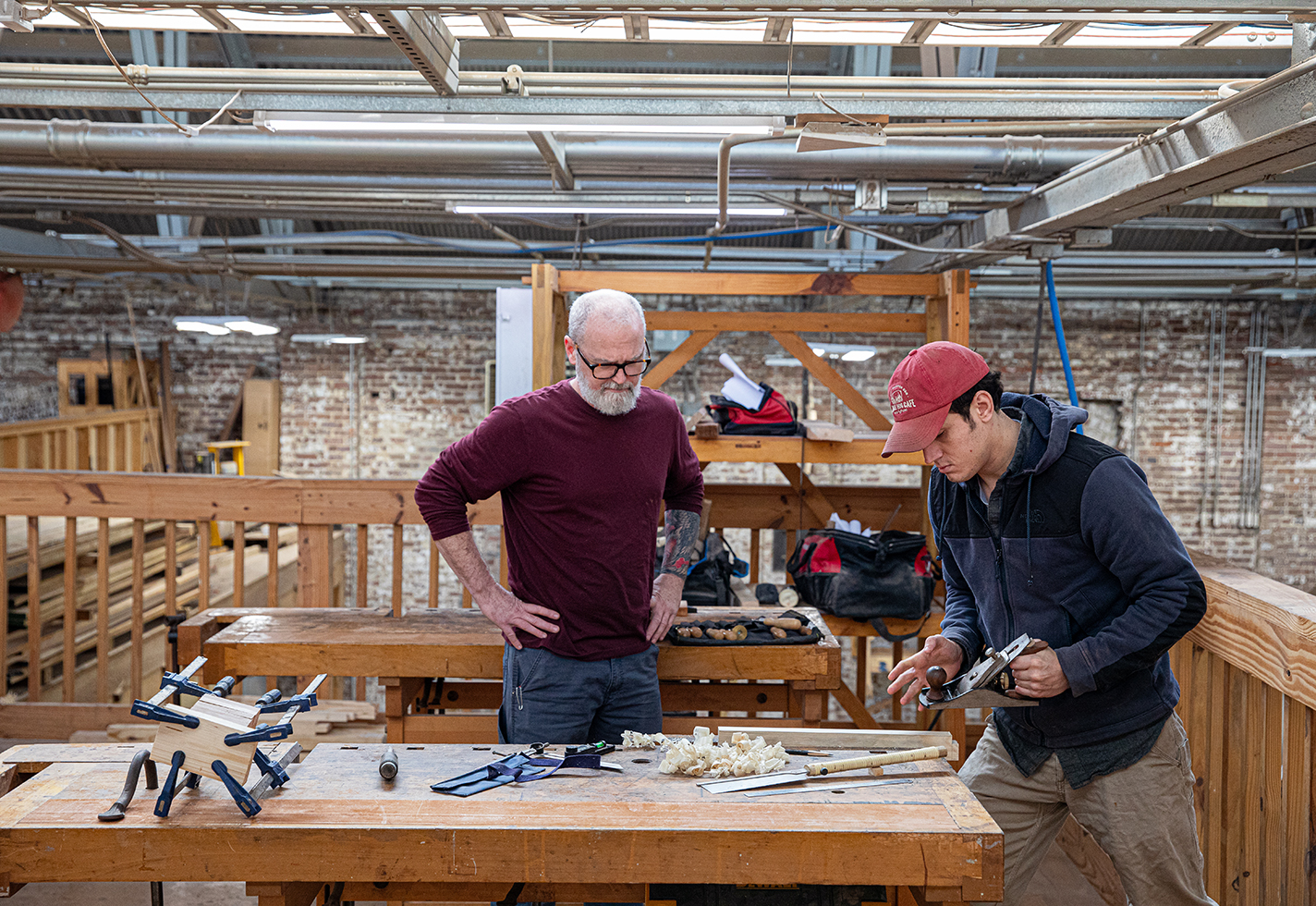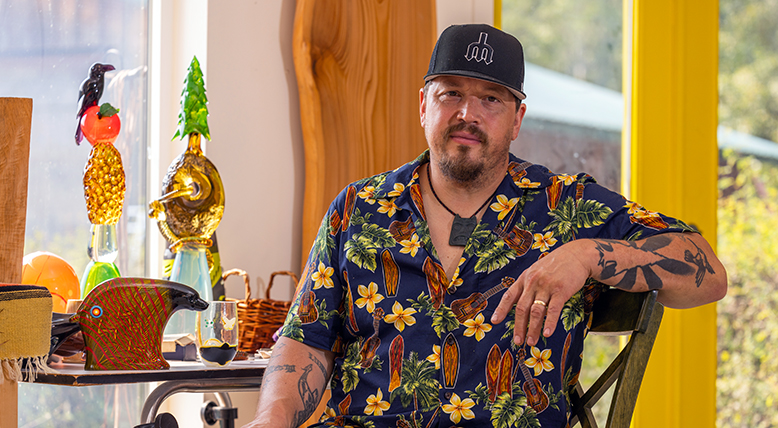Playing with clay. That’s how master Catawba potter Bill Harris describes his work. It’s certainly one way to characterize it, but as anyone familiar with his legacy in the making knows, he’s doing much more than just that. Harris is carrying an at least 4,000-year-old tribal tradition forward into the future, preserving this rich cultural practice while also evolving it to yield an aesthetic all his own.
“I call it ‘playing’ because it brings me joy,” says the 71-year-old Native American artist, who for 12 years also served as chief of his tribal nation, which is South Carolina’s only federally recognized tribe. “I play with clay. I develop a relationship with clay. I have a respect for clay.”
That reverence for the medium and the material itself is something his grandmother, Georgia Harris, instilled in him. Herself a celebrated Catawba potter credited with sustaining the art form—she was a 1997 NEA National Heritage Fellow—she in turn learned from her grandmother, Martha Jane Harris. The link, both literal and figurative, between generations is ever apparent.
“You can see the teacher-student relationship in the work itself, from Martha Jane to Georgia, then from Georgia to me,” says Harris, who teaches youth and community classes at his Blue Heron Clay studio in McConnells, South Carolina, and at the Catawba Cultural Center in nearby Rock Hill. “What we do with clay is, in many ways, in our DNA. We have never given up on clay; we have kept the tradition alive all these years.”
Dating back millennia and historically practiced largely by women, the Catawba pottery-making process is an intricate one. First, practitioners collect their clay from clay holes (akin to beloved fishing spots) that have supplied the substance for centuries. It is then prepped for use, including drying, pulverizing, rehydrating, and straining and filtering to render the material moldable.
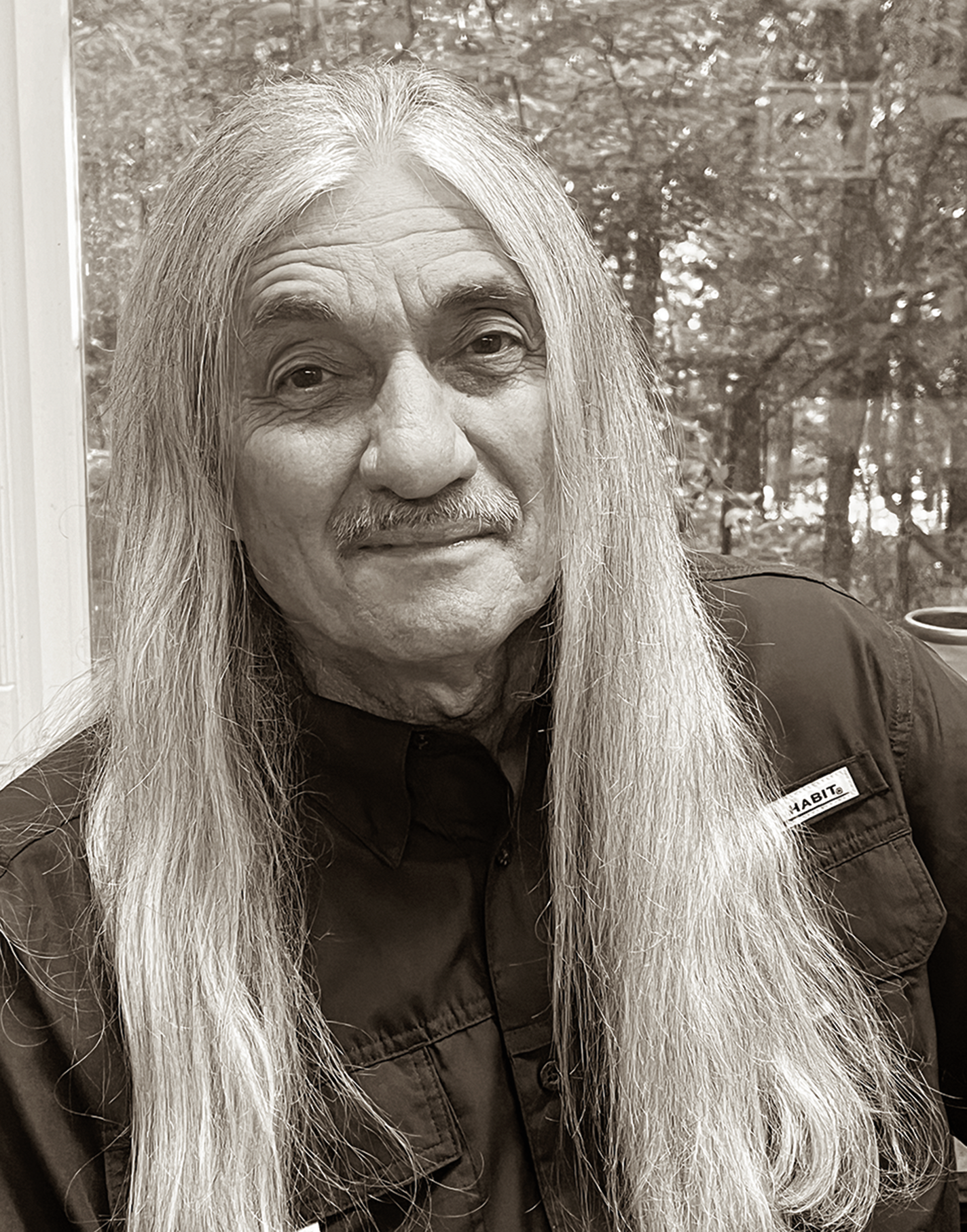
Bill Harris is a former chief of the Catawba Nation in South Carolina.
